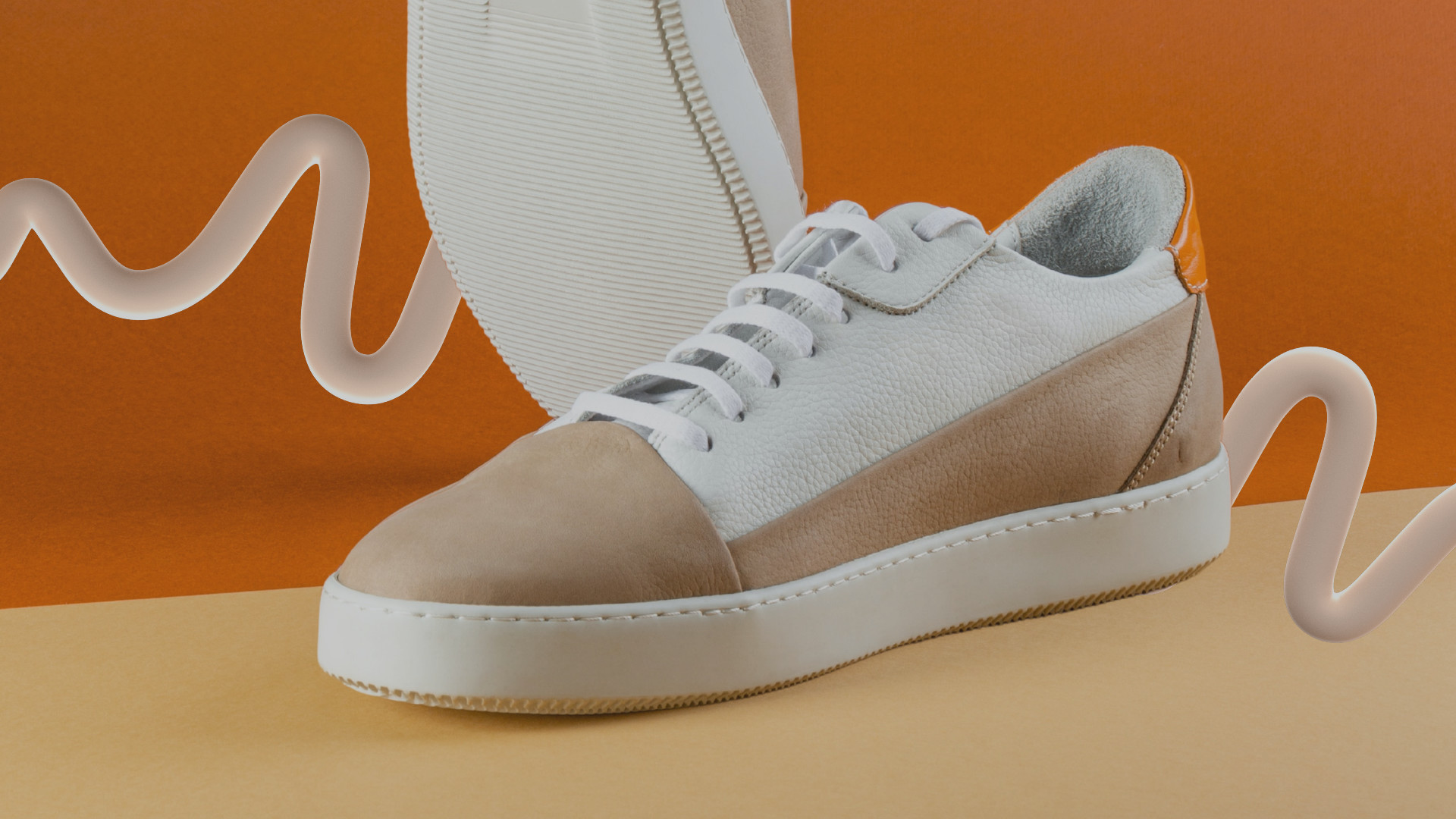A C-Suite Guide to Navigating The New Year’s Digital Threads
Fashion moves fast. And thanks to the accelerating effect of technology, this year we’re likely to see it move even faster.
Before jumping into my predictions for 2024, though, I want to compare the coming wave of change to the early 90s, when the World Wide Web was invented and then commercialised. Because for people like me, who were well into their careers at that time, the anticipation and uncertainty that’s everywhere at the moment is going to feel very familiar.
It goes without saying now, but the internet was a metamorphic moment of change for every industry, and one of the first industry movers taking advantage of this moment was the fashion industry. By 1995, several global businesses had launched their online marketplaces – businesses like eBay and Amazon, which moved quickly – followed by an explosion of e-commerce businesses over the next few years.
There were, of course, organisations that failed to see the real potential (and the true scale) of the internet in time, but history has shown that when a major technological revolution comes, the businesses that embrace it early are the ones that thrive.
Looking back also reminds us that, for all the exciting new possibilities, the most profound changes often come from figuring out how to deploy new disruptions in service of optimising existing business models, eliminating inefficiencies, and connecting people in new ways. Before the Internet came to the fashion industry, for example, we struggled with communications using paper-based systems, PDM (Product Data Management) for internal teams, telex, faxes, and clunky emails as our way to connect with external partners.

Then fashion moved to using the Internet and quickly started transitioning to instant messaging, video conferencing, followed by social media and cloud-native PLM (Product Lifecycle Management) – which, combined, revolutionised how we shared and connected with our internal teams, supply-chain partners, and consumers.
As much new possibility space as it unlocked, the real lasting impact of the Internet was to help democratise fashion’s ecosystem, swiftly tearing down brick-and-mortar walls and igniting global trends like wildfire. It empowered independent voices, elevated new creatives and new commercial models, reshaped marketing, kick-started fast fashion, and redefined fashion’s relationship with traditional seasons and styling. So much of what we take for granted in fashion today is younger than many people realise, as well as much of it being directly attributable to the dawn of the web.
Looking into AI, today, feels like stepping back into those heady days of dial-up Internet when we used 14.4k and 28.8k modems to communicate with our supply-chain partners. The technology isn’t ready for prime-time, just as it wasn’t in those early days of the internet, but it’s the same electricity of potential that I feel, the thrill of exploring a vast, practically uncharted territory.
Over time, the technology will mature (the jump from modem to ADSL, for instance, was made by the early 2000s) and every industry – but especially fashion – will see the same rapid-fire progress as we did from deciphering cryptic URLs to interacting with intuitive web apps, with the same delightful mix of brilliance and unexpected stumbles along the way.
The key difference, though, is that I believe we’ll move through that maturity curve exponentially faster. And predicting what’s on the other side is easier in some ways (because the capabilities are already here) but harder in others, because building innovation on top of innovation is inherently unpredictable.
Back then, the Internet’s full potential was unknown. Could anyone in the mid-90s really have predicted TikTok – with all its positive and negative implications – with Netscape Navigator as their sole frame of reference?

AI is in the same position today, with concerns about security, privacy, and societal impact dominating the headlines. Similarly, we are still unsure how AI will evolve – and a lot of people, including some of its creators and custodians, are unclear on how it actually works. People have fears surrounding its development and application – some of which are entirely reasonable. There are potential long-term consequences of its widespread adoption: job displacements, algorithmic bias, IP protection, privacy & security, and a pressing need for transparency and accountability from the companies behind the major frontier models.
As we move forward, just like in the early days of the Internet, we will need to address each of these concerns with the help of researchers, policymakers, and the public, to ensure that AI can be effectively, safely, and successfully embedded across the fashion sector – since the scale of that embedding is already well underway.
With all that in mind, enough of the past: let’s look at some of the new trends that you can expect in 2024, all of which AI are either fundamental to, or which AI will serve to accelerate
Hyper-Personalisation
The future of AI in fashion trend analysis is brimming with exciting possibilities, promising to revolutionise how we understand and predict what’s going to sell and, perhaps more importantly, what’s not. Unlike humans, AI algorithms can sift through and surface insights from oceans of data from diverse sources, including runway shows, street-style photos, social media trends, tastemakers and influencers, e-commerce platforms, brands’ own real-time sales data, and search engine queries. They can deliver up-to-the-minute and continuous data that can, provided the right systems are put in place, feed an LLM (Large Language Model) that users can then interact with as a kind of trend oracle, and use to inform the next cycle of brand-wide design and development.

And the same principles can also be extrapolated into personalised product creation; AI can provide an accurate and comprehensive understanding of what people are wearing, buying, and talking about (good and bad sentiments), revealing hidden patterns and emerging trends, which consumers can then use to inform their personal style and which brands can offer as a consumer-facing service with on-demand production as the backend.
Brands that truly get to know their customers, gender, age, hobbies, body shapes, actual sizings, fit preferences, colour choices, product types, previous purchases, even the location that they live in will help brands provide hyper-personalised offerings. Brands that follow this path and that operate using personalised data will then be able to create new made-to-order, and to some extent mass-customisation models. Offering new benefits like high margins, positive customer satisfaction, reduced return rate, reduced stock to name just a few of the benefits.
Image recognition and understanding
Although it’s been employed for this purpose, AI can go far beyond simply identifying colours and patterns in images. It can analyse the nuances of silhouettes, prints, plains, textures, and even the emotions evoked by specific garments or footwear styles. This deeper understanding will lead to more precise trend forecasting and personalised recommendations.
Trend & Mood Boards
AI can analyse the cultural and social context surrounding fashion trends, considering factors like current events, (ESG) environmental and social sustainability, economic conditions at the regional, country, or city level, celebrity influencers, and even AI influencers! This all-round approach will lead to a more nuanced understanding of what drives trends and how they are likely to evolve.

Design & Development
As AI gains momentum (and, crucially, builds trust), design teams, with help from their IT departments, will build (LM) models that will ingest the latest trends (weekly, Daily, Hourly!) and use AI prompts (text descriptions) along with computer vision to generate new design inspirations in just a few minutes. Generative AI models will be used to illustrate stories and articles that automatically create design briefs and support product launch materials.
AI will dramatically upscale the value of 2D sketches, converting them quickly into photographic quality 3D images by training on combined 2D patterns, photographs & 3D data, and rendering techniques to spark ground-breaking designs that will accurately relate to given body measurements, the scale of prints, logos, design assets, or embroideries – and that, in turn, will be displayed on human-like Avatars.

Developers using PLM data will be able to access (LLM) to explore and analyse sustainable materials and processing methods that will help provide more excellent options for more sustainable design choices. AI will accelerate and inspire design & development teams using data-driven insights rather than solely human intuition.
AI image enhancements
AI image enhancement tools will be infused across design, development, and manufacturing teams, offering multiple use cases that will, in turn, drive significant value to all partners by upscaling low-resolution images and turning them into crisp, high-resolution photos driven via intelligent algorithms. AI tools like ColorLUT and VanceAI can adjust colour tones, boosting vibrancy and correcting lighting imbalances, ensuring garment photos radiate in their intended hue. Many use case examples include wrinkle removal, background replacement, creative scene settings, and material texture boost. These are just a few examples.
Digital Twins
The usage and the value of Digital twins will continue to grow, driven partially via the combination of AI’s powerful modelling linked with IoT (Internet of Things), physical devices, embedded sensors, and other technologies such as Blockchain software that will help collect data across the end-to-end value chain.

Text-to-Video
Text-to-video is another extension of generative AI that will move rapidly this year, and the use cases are widespread. Here are several examples: Brands can train their AI models to explain the benefits of a company’s product in moving video, rather than 2D or 3D imagery. Design teams can see their ideas come to life using text prompts (keywords), for example, “bohemian t-shirt.” The text-to-video model will generate a video that will include a collage of t-shirts and accessories, inspiring the team.
Virtual fashion shows are another text-to-video example that designers can use as part of their growing toolsets. Turning 2D Trend Forecast and Mood Boards into AI-generated dynamic video collages showcasing new designs, materials, and silhouettes will become a new reality. Many more use cases will benefit from text-to-video, especially for the downstream teams in marketing.
3D-Printed Garments, Footwear & Accessories
3D printing technology is rapidly advancing; imagine a future when you can print your clothes at home! 3D printing will open a world of possibilities for customisation and creativity. Design and development teams are already printing out shoes and garments. Companies like Stratasys, Materialise, and Nervous Systems lead the way in 3D printing.
Smart Fabrics and Wearables
I expect to see materials and wearables that do more than just look good. The possibilities are endless, from fabrics that can monitor your health and heart rate to garments that change colour based on temperatures or textures. Imagine a sports shirt that tracks your heart rate and adjusts the resistance for you, or a dress that changes colour to match your mood, or changes linked to sunlight. Footwear and Accessories: most people wear smartwatches, don’t they? So why can’t we embed sensors into our products beyond RFID tags and QR codes?

Sustainable Fashion and Upstream value-chain
AI will help optimise product planning, material, and resource allocation. At the same time, AI will streamline value chains and minimise waste through improved design eco-friendly printing, cutting, and manufacturing processing. AI will also help forecast demand with uncanny accuracy, preventing overproduction, bringing in new on-demand models, and ensuring the right products reach the right people at the right time.
AI will also assist in a future of agile manufacturing, where AI ensures every digital thread, and every digital stitch contributes to both profit and environmental sustainability impact. AI can help minimise waste and track the lifecycle of every product from seed to second-hand shop. AI’s influence will extend further up the value chain, guiding sustainable sourcing decisions and identifying ethical partners based on current KPIs (Key Performance Indicators). It will be able to detect potential disruptions in the value chain, mitigating risks and ensuring resilience.
Across all of these use cases, we should ensure that AI has a conscience, where transparency and responsibility become competitive advantages.

By embracing AI upstream, brands will not just be optimising processes but tapping into a wealth of innovation and foresight. Brands will be able to create a fashion ecosystem that is not only responsive but also responsible, respecting resources and valuing ethics, and pave the way for a more sustainable and adaptable fashion industry.
3D-DPC: From Click to Catwalk
On-Demand Fashion: Forget supply chain headaches and inventory nightmares. 3D-DPC is the fashion replicator, beaming bespoke garments from the digital realm to customer doorsteps (or, more likely, living room printers). 3D-DPC isn’t just about convenience; it’s about sustainability, slashing lead times, minimising carbon footprints, and offering instant gratification unlike anything before. But remember, with great power comes great responsibility. Invest in robust intellectual property safeguards, ethical sourcing practices, and responsible waste management to ensure your brand isn’t just fast; it’s ethical.
The Metaverse Makeover
Fashion beyond the physical is the Metaverse gaining new momentum; it’s another frontier of a brand experience. Virtual showrooms brimming with digital collections, accessible to global audiences 24/7. Think personalised avatars sporting outfits also available in-store or online, influencing trends that ripple through the real world. The Metaverse isn’t just about pixels and polygons; it’s about a whole new dimension of customer engagement and brand storytelling, potentially helping to generate new revenue streams. Embracing the Metaverse to build brand loyalty that transcends geographic borders and physical limitations is another channel to market.

The Ethics of Fashion’s Tech Takeover
Data privacy, intellectual property, and the potential for bias in AI-driven design are just some of the threads we must carefully build into our models. Brands should invest in robust data governance, responsible sourcing practices, and ethical AI development to ensure their brand is an innovative and socially responsible leader.
The takeaway?
The time to seize this opportunity is now; remember eBay and Amazon in the 90s. They were both early adopters of the web, and they are both major forces today. Both the Internet and AI are powerful engines of economic growth and innovation. While the Internet helped revolutionise information access and communications, AI promises to transform how we work, consume, and make decisions. Navigating their full potential and mitigating their potential downsides requires careful policy, education, and responsible development.
I’m convinced that in 2024, those c-suite first movers that truly harness AI’s potential across the entire value chain will shape the future of fashion and redefine its very essence. 2024 isn’t just about another year of fleeting trends. It’s about weaving your brand into the very fabric of the future. Embrace the technological threads, invest in strategic partnerships, and prepare to navigate the digital catwalk with confidence. The future of fashion is yours to stitch. Make it bold, make it sustainable, and make it yours.

Mark Harrop
As a technology advisor to the fashion industry, Mark has worked for more than four decades to help the world’s best known retailers, brands and manufacturers achieve efficiency savings across their entire supply chain through informed technology investments.




